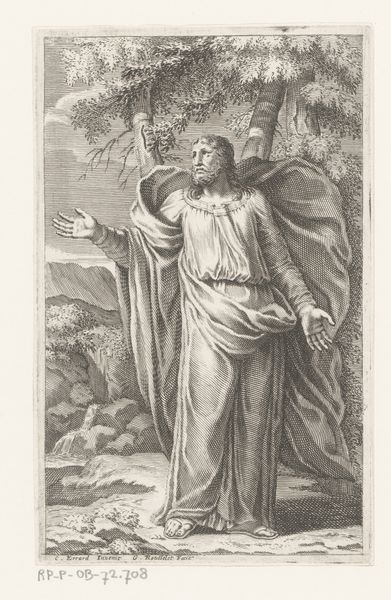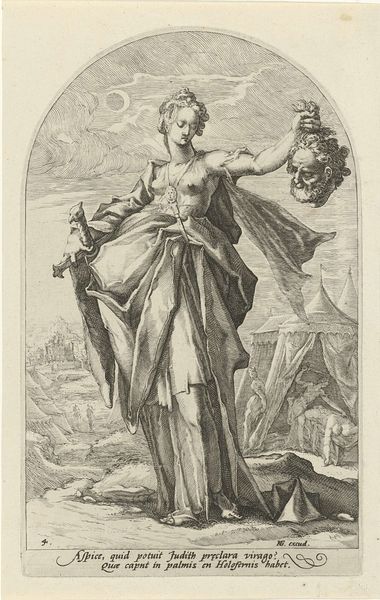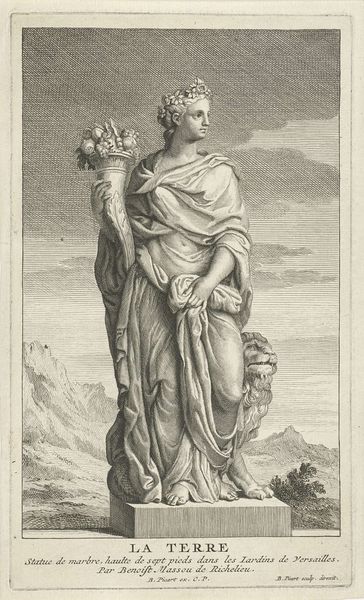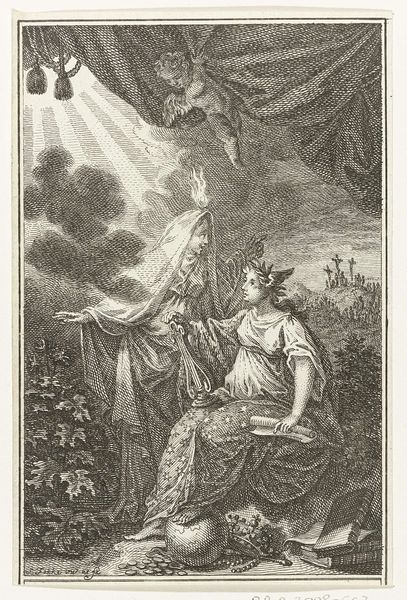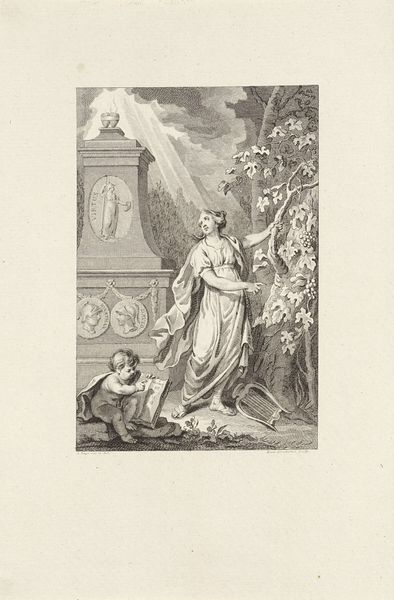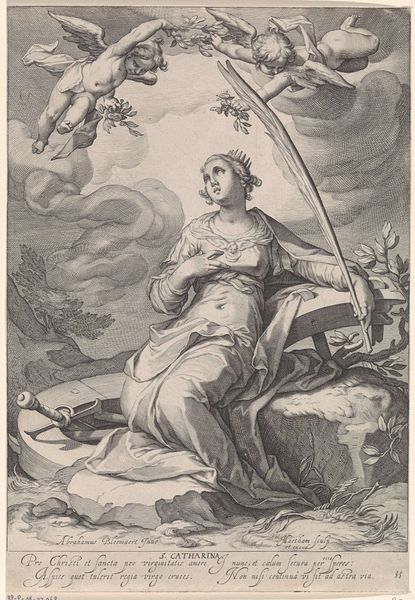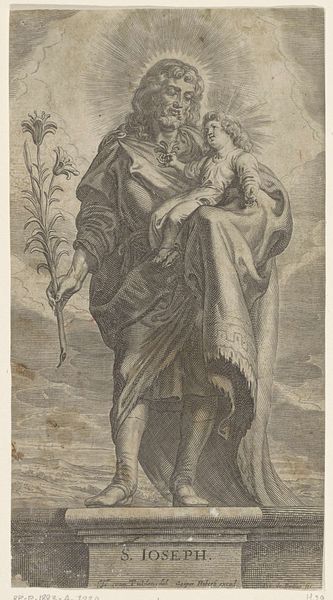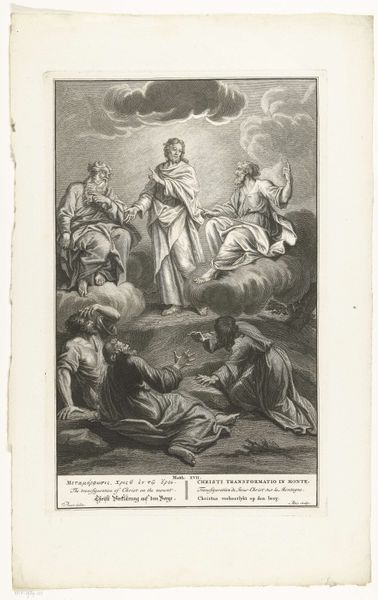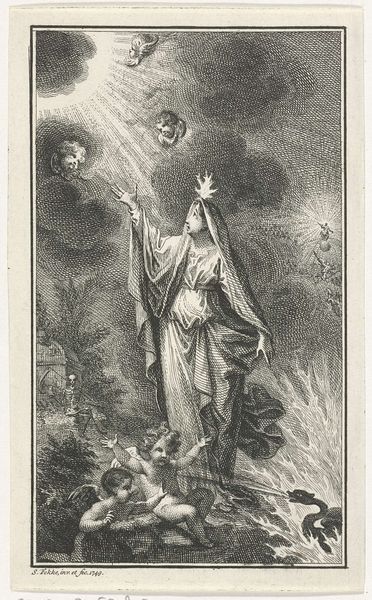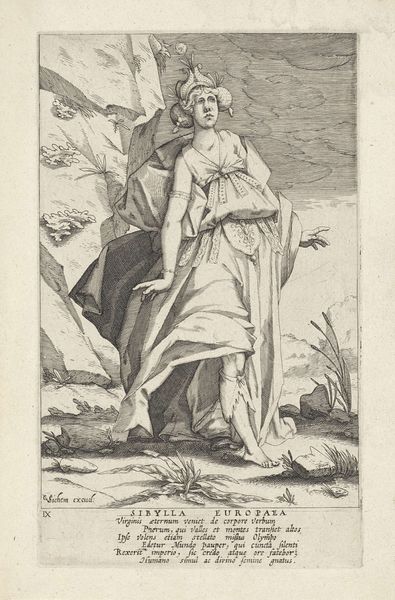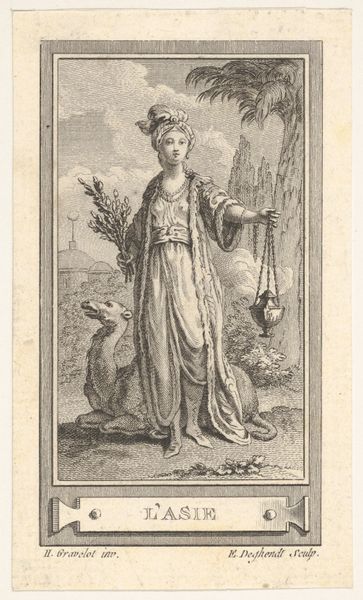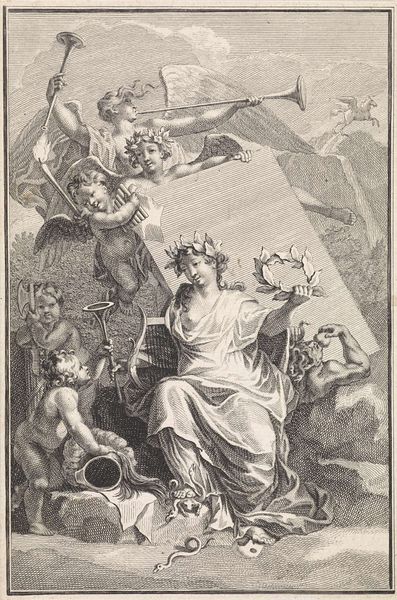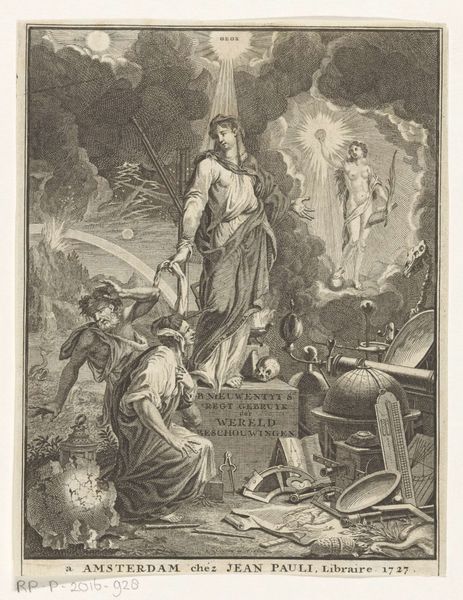
print, engraving
#
portrait
#
allegory
# print
#
classical-realism
#
figuration
#
line
#
history-painting
#
engraving
Dimensions: height 164 mm, width 103 mm
Copyright: Rijks Museum: Open Domain
Curator: We're looking at "Vrede met caduceus en olijftak," or "Peace with caduceus and olive branch," an engraving by Simon Fokke, dating to 1748. It resides here at the Rijksmuseum. What are your first thoughts on this print? Editor: There's a somber feel despite the purported peace. The monochrome, the etched lines… It’s evocative of both conflict and resolution in a strangely uneasy balance. What does that say about the artist's process? Curator: Well, the technique itself – the meticulous engraving – allows for incredible detail and tonal variation, if you look closely, giving depth to the allegorical figures and symbols. We see the central figure of Peace, classically rendered, with her olive branch and caduceus, but surrounded by tools of war below, which would have been part of the making of the piece. Editor: Exactly! And how the artist deployed line work speaks volumes, too. Notice how the parallel hatching in the background seems almost like a scrim of falling ash, an environmental trace, and how sharply rendered and classical the personification of Peace is in the foreground? She rises above this destruction as a type, seemingly divorced from its social costs. Curator: It speaks to a prevailing worldview perhaps, where idealized virtues stand in contrast to the harsh realities of the time. Engravings such as these also were not only for art's sake. They were made for dissemination, mass consumption, affordable decor... Editor: I wonder how viewers engaged with the material implications of Peace, then? A piece like this can reveal a complex understanding of artistic process, access, and meaning-making when looking at its place in the system of things, and its production. Curator: That’s a fair point. Looking at it through a semiotic lens, it is not a transparent sign but a cultural product imbued with layers of historical context and interpretation. Editor: Yes, and when viewed materially, a piece like this complicates our picture, exposing anxieties and revealing the distance between lofty ideals and real labor practices. Curator: Indeed. In examining its structure and signifiers, we appreciate its artistic and philosophical intentions, which also become part of the making, of course, but sometimes get covered over when looking exclusively at production. Editor: Fair enough. Perhaps each angle allows us to approach the work with richer appreciation of how such things can be and are produced!
Comments
No comments
Be the first to comment and join the conversation on the ultimate creative platform.

